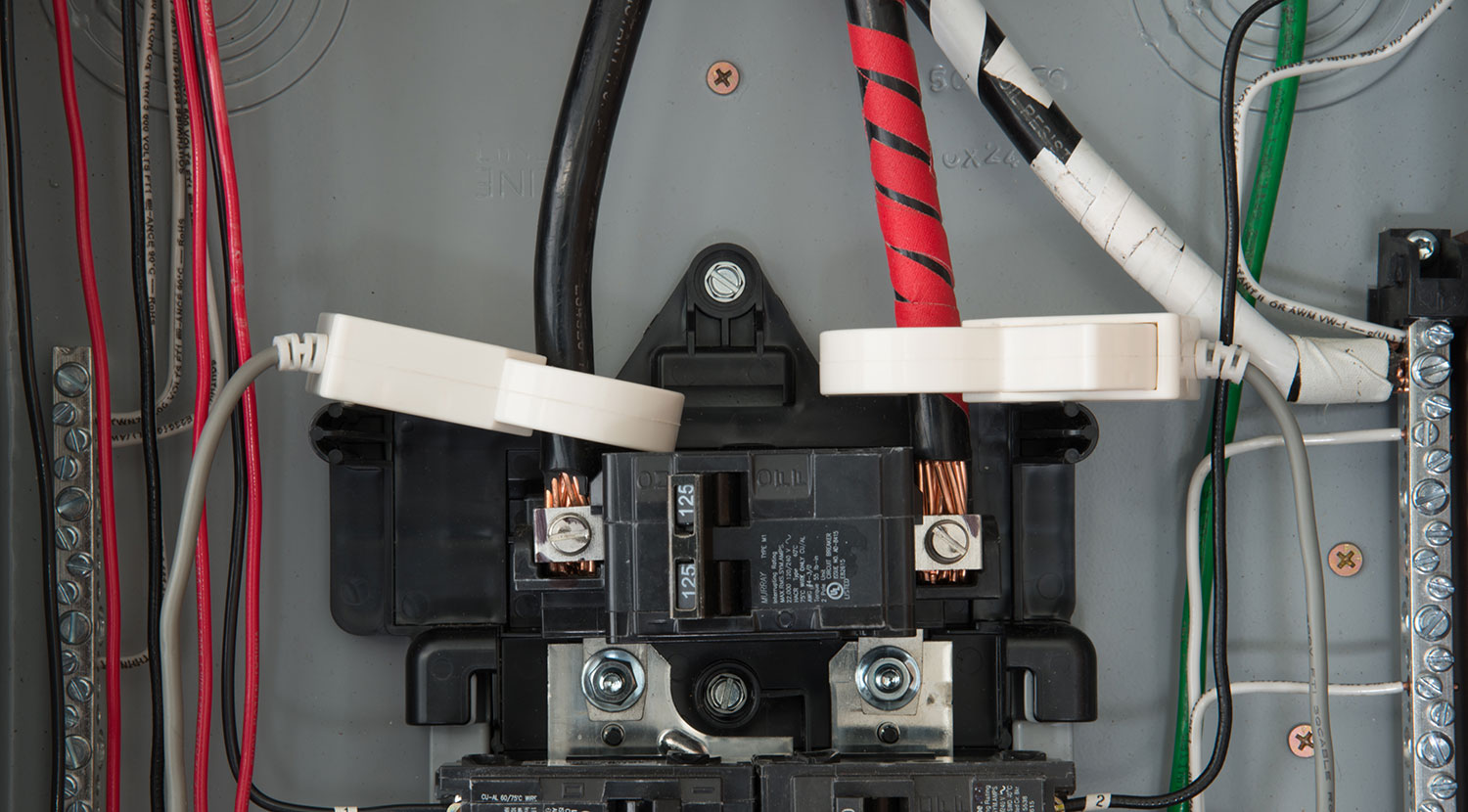We’ve received many questions related to “split-phase” power distribution1, which is used in North American homes, and how a single Sense installation can handle such a system. Hopefully I can shed some light on the matter, and explain:
- How North American homes can have both 240V and 120V appliances
- Why Sense must be installed on a 240V circuit, more commonly used for high-power loads like dryers, ovens, and central air
- How Sense uses split-phase power as an additional clue to help distinguish devices
The world’s power distribution systems use alternating current, or AC, in which the electrical current alternates direction many times a second. This is because transformers allow AC to be easily raised to a very high voltage for long-distance transmission, and then lowered back down for use.2 Voltage is like water pressure; it measures “how hard” the electrons are pushing. Like water pressure behind a tap that is turned off, voltage doesn’t go away when the switch is off — it’s still there, behind the switch. Even with voltage, if they have nowhere to go electrons will not flow and no useful work will be done. However, with the “tap” on, electrons that are pushing harder can do more work each. So, higher-voltage systems can get more work done with less electrical current.
In an alternating-current system, typical household appliances are connected to a “live” wire, which has an alternating voltage and a “neutral” wire, which neither pushes nor pulls electrons. Neutral is necessary, though, to complete the path that electrons take. I’m tempted to refer to this as something like a sink drain, but I may have pushed (or pulled) the metaphor too far!
North American homes are not wired up with a single live wire, but two. The difference between them is that when one is pushing, the other is pulling, and vice-versa. The “normal” appliances and outlets in a house are divided amongst the two live wires, and all are connected to neutral. Because the voltage difference between a single live wire and neutral is alternating with a magnitude of 120V3, appliances that run on 120V power can be connected to the neutral wire and either of the two live wires.
Very power-hungry appliances can be built more efficiently if they can run on 240V. With twice the voltage, they can receive twice the amount of power with the same amount of current. This allows the use of thinner and less expensive wires. Appliances like this are connected to both live wires. Because one is pushing while the other is pulling, the voltage difference between them is twice the difference between a single live wire and neutral. In the graph below, you can see what this looks like: A positive voltage below indicates the line is “pushing,” and a negative one indicates it’s “pulling.” The difference between two lines is what determines how much electrical “pressure” there is between them.
To measure the power usage and detect the electrical signatures of all appliances in the house, we need to sense both the voltage and the current of both live wires. The natural way to access both wires for voltage measurement is to connect to a 240V breaker — even though Sense’s power needs are minimal, a 120V circuit breaker just wouldn’t give us all the information we need to detect every appliance. To measure the current on each line independently, we use two different current sensors, each of which senses the current flowing through its attached wire.
A happy side effect of split-phase electrical power is that it gives us an additional clue we can use when we detect appliances, by dividing appliances into three categories: Those on one supply line, those on the other, and those on 240V circuits (and thus present on both live wires.) Of course, Sense’s load disaggregation algorithms use many more data points than simply which line a device is on — but it’s nice to have some additional help! For example, if we know your toaster is on one of the “legs” of the system, and we notice a similar electrical signature on the other leg, we won’t mistakenly report that your toaster is on.
To recap:
- North American homes are connected to two live wires, not just one
- Normal appliances get 120V from either of the live wires, and power-hungry appliances get 240V by using both live wires
- Sense detects voltage and current from both live wires in order to give you the most accurate picture of energy usage in your home
I hope this has been an interesting and informative glimpse into how split-phase power works, and how Sense makes use of it to give you even better home awareness. Happy Sensing!
1. Some of our more technical readers have raised concerns about our terminology around phases — we try to consistently use “split-phase” to refer to the single-phase three-wire system used in North America, but occasionally have lapsed into referring to the two lines of such a single-phase system as “phases,” even though their phase offset is equivalent to a negation of magnitude.
2. In the late 19th century, there was a great commercial battle between the Edison Electric Light Company and the Westinghouse Electric Company, the former backing a DC system and the latter an AC system. The world came to its senses, and AC won out. However, modern power electronics are making DC voltage changing much easier, and long-distance DC transmission is making a comeback!
3. Technically, the magnitude is 170V. 120V is a type of average called RMS, which is commonly used to describe AC power. Nerd talk: RMS voltage is the voltage a DC circuit would need to have to cause a resistive load, like an incandescent light bulb or heating element, to use the same wattage as in the AC circuit.
